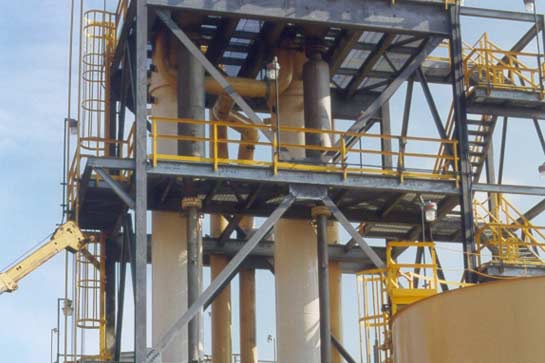| Application | Quench Water Cooler | |
| Industry | Chemical | |
| Fouling Issue / Frequency |
In the conventional heat exchanger, fouling reduced the heat transfer (k-value) from 100 to 25% in 4 to 6 weeks. |
|
| Solution / Approach |
A test with the self-cleaning heat exchanger technology was done to prove the performance. After this test, 4 self-cleaning heat exchangers applying recirculation with fluid velocity of 0.45 m/s and a heat transfer surface of 1,250 m2 each were installed. A large storage vessel maintains a constant liquid flow into the self-cleaning heat exchangers. After 3 years of operation, the plant went bankrupt and stopped the production of acetylene |
|
| Process Conditions | Tube | Shell |
|---|---|---|
| Medium | Quench Water Acetylene Plant | Cooling Water |
| Pressure | 6 barg | 6 barg |
| Temperature | In: 80oC Out: 37oC |
In: 32oC Out: 46oC |
| Flow | 4 x 700 m3/h | 4 x 2100 m3/h |
| Dimensions | |
|---|---|
| Number of Tubes | 703 per heat exchanger |
| Length of Tubes | 16 m |
| Diameter Tubes | 28.5 mm (ID) |
| Particle Type | Stainless Steel |
| Particle Size | 1.6 mm |
| Results |
No cleanings per year required compared to the 12 cleanings per year with the conventional heat exchangers. |


